Art & Exhibitions
See Frida Kahlo in Her Element in a New York Show of Rare Photographs
Fifty photographs of the Mexican artist are now on view in "Frida Kahlo: Forever Yours" at Throckmorton Fine Arts.
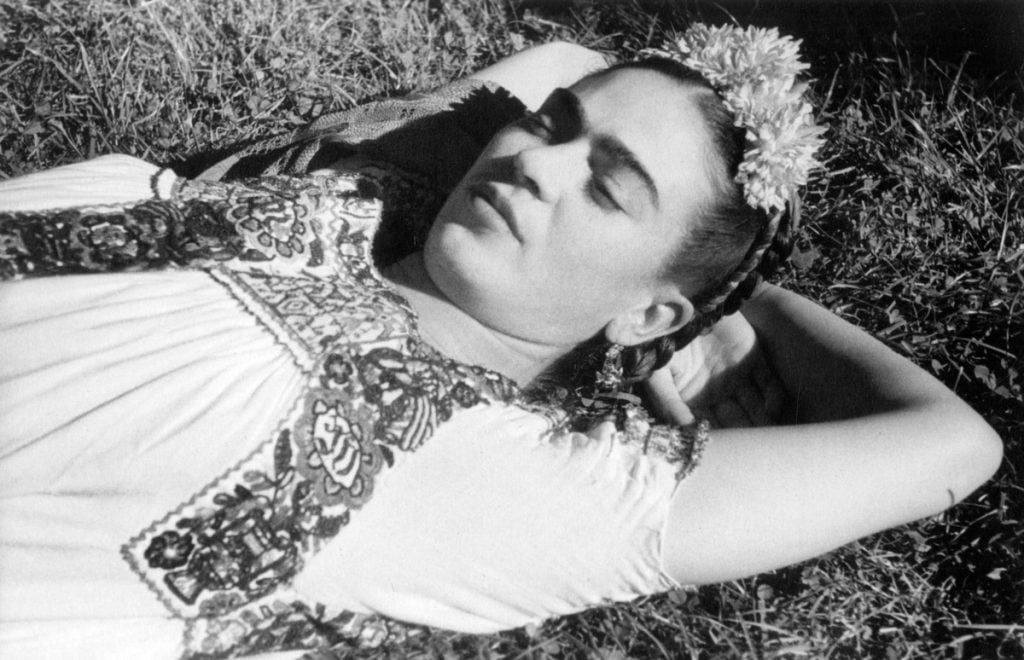
Fifty photographs of the Mexican artist are now on view in "Frida Kahlo: Forever Yours" at Throckmorton Fine Arts.

Katie White

Over her brief but dazzling life, Frida Kahlo was photographed by some of the greatest talents of her generation, from her lover Nickolas Muray to Edward Weston to her dear friend the Swiss artist Lucienne Bloch.
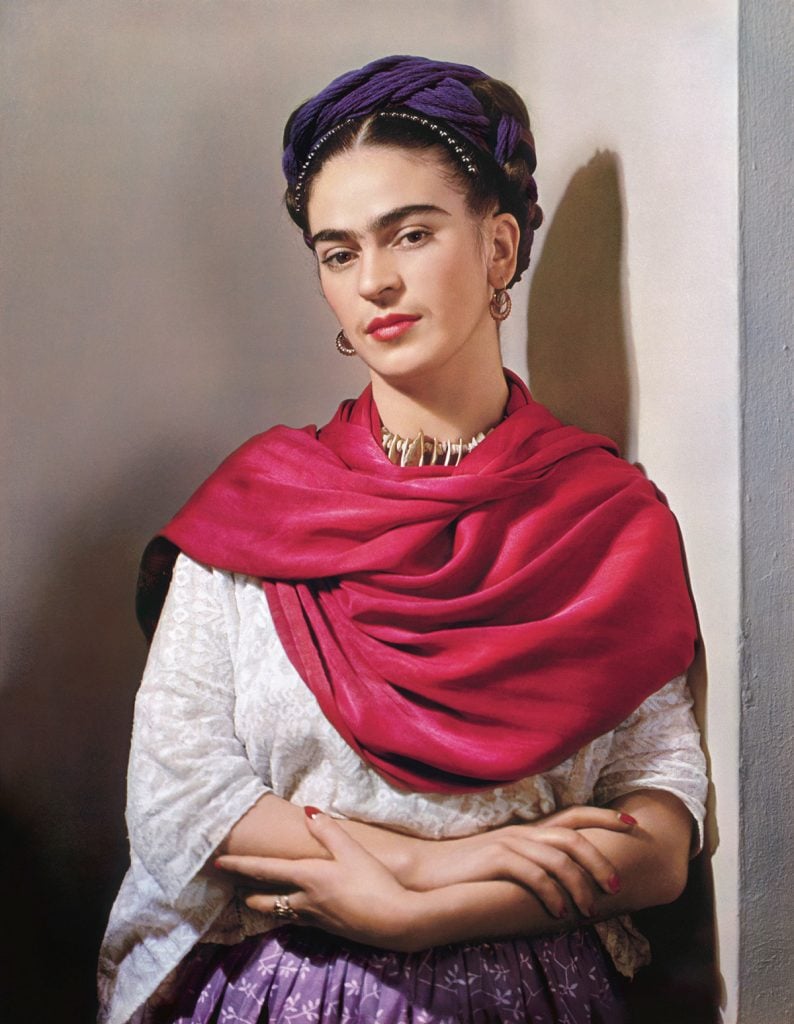
Nickolas Muray, Frida Kahlo with Magenta Rebozo “Classic” (1939). Courtesy of Throckmorton Fine Art.
In the decades since her death in 1954 at the age of 47, Kahlo’s image has seemingly become an extension of her painting practice in a way unlike really any other artist. Her iconic brow and black coils of braided hair are burned into popular consciousness, along with her self-adornment in indigenous dress and Aztec jewels.
A new exhibition “Frida Kahlo: Forever Yours” at New York’s Throckmorton Fine Art makes the case that these photographic portraits of Kahlo are, in fact, a unique expression of the Mexican artist’s creative persona.
The dazzling exhibition (through September 7) presents 50 high-quality photographs of Kahlo dating from 1929 to 1951, including iconic portraits, tender moments with her husband, the artist Diego Rivera, and playful, as well as irreverent moments with friends (Kahlo with a lampshade on her head? You bet.) The images represent just a small fraction of “Frida photographs” from the collection of dealer Spencer Throckmorton who started collecting photographs of the artist in 1977.
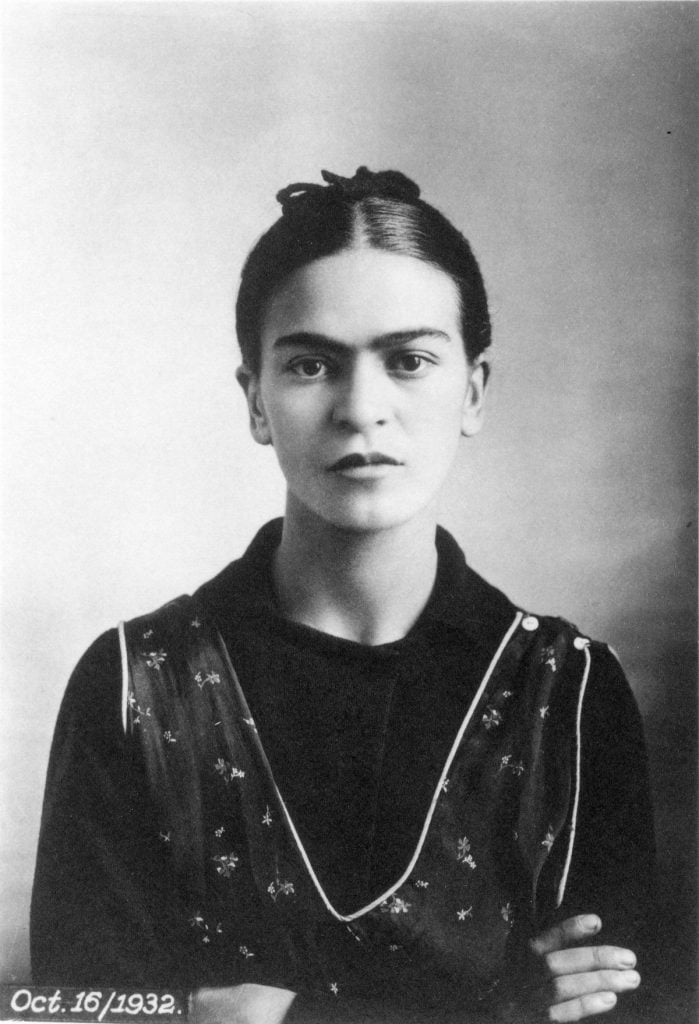
Guillermo Kahlo, Portrait of Frida Kahlo, Oct 16, 1932. Courtesy of Throckmorton Fine Art.
“I have photographs of Frida since she was four years old,” he said in a phone interview earlier this month (you can see a video of the dealer discussing the show here). For Throckmorton, the show charts both the artist’s maturation over the decades and her finesse and dexterity in engaging with the medium of photography. “Through these photographs see her become a totally self-assured and mature painter, believing in herself as she grows,” he said, “We see that the photographs are beautiful and beautifully posed—Frida had worked for her father who was a photographer when she was very young and he taught her how to pose for the camera.”
A portrait of Kahlo by her father, Guillermo Kahlo, appears in the show—a piercing image that shows the young artist staring out from the camera with penetrating intensity. The portrait was taken when Kahlo returned to Mexico by train from New York following her mother’s death in 1932.
The poignancy of these photographs is often rooted in Kahlo’s intimate connections to the photographers themselves. Several brilliantly colorful photographs of Kahlo taken by her lover Nickolas Muray appear in the exhibition, including the iconic image Frida Kahlo with Magenta Rebozo “Classic”. In several of these portraits, Kahlo adopts classical stances seemingly plucked out of Rennaissance paintings—an artful positioning Throckmorton says reflects their relationship.
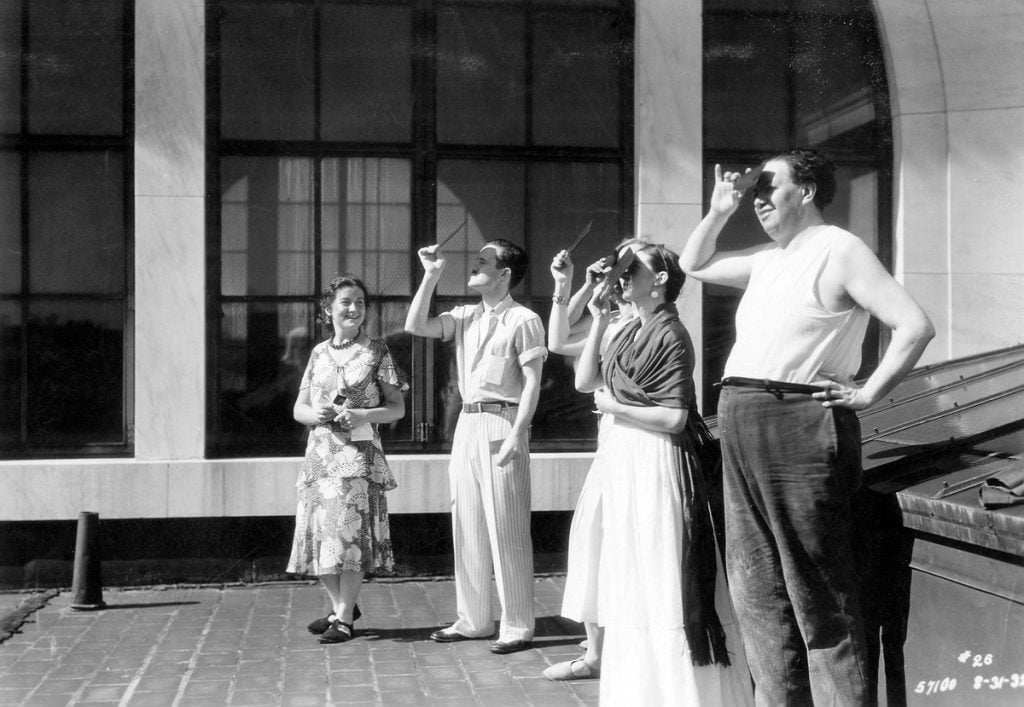
Lucienne Bloch, Frida, and Diego, with Colleagues, Viewing a Solar Eclipse on the DIA roof (1932). Courtesy of Throckmorton Fine Art.
“Nickolas Muray came along and taught her classical poses. She was a natural because she was studying art history. A lot of the poses he took of Frida were based on Renaissance and 17th- and 18th-century paintings,” Throckmorton explained.
Other photographs by the artist Lucienne Bloch are delightfully informal. “Lucienne was a friend of hers so Frida lets her hair down. One photographer shows Frida with a doily on her head—another one with a bottle of wine. There’s the one of her with a lampshade on her head!”
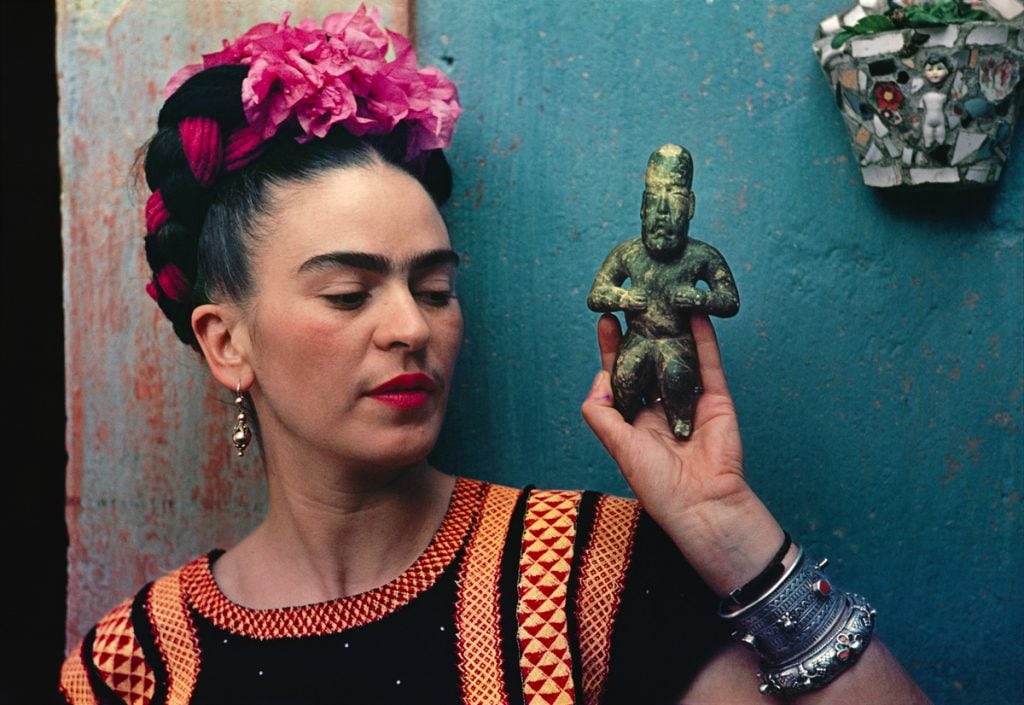
Nickolas Muray, Frida with Olmeca Figurine, Coyoacán (20/30) (1939). Courtesy of Throckmorton Fine Art.
Other images highlight Kahlo’s considered and passionate engagement with fashion and the ways dress and jewelry became her embodied mode of celebrating indigenous culture and Aztec heritage. “In 1929, Frida started to wear Mexican indigenous clothing from the Indians of the coast of Mexico and Tijuana with long skirts. She loved jewelry and a lot of her jewelry was made by William Spratling, an American. It was a very specific way of presenting herself,” he explained.
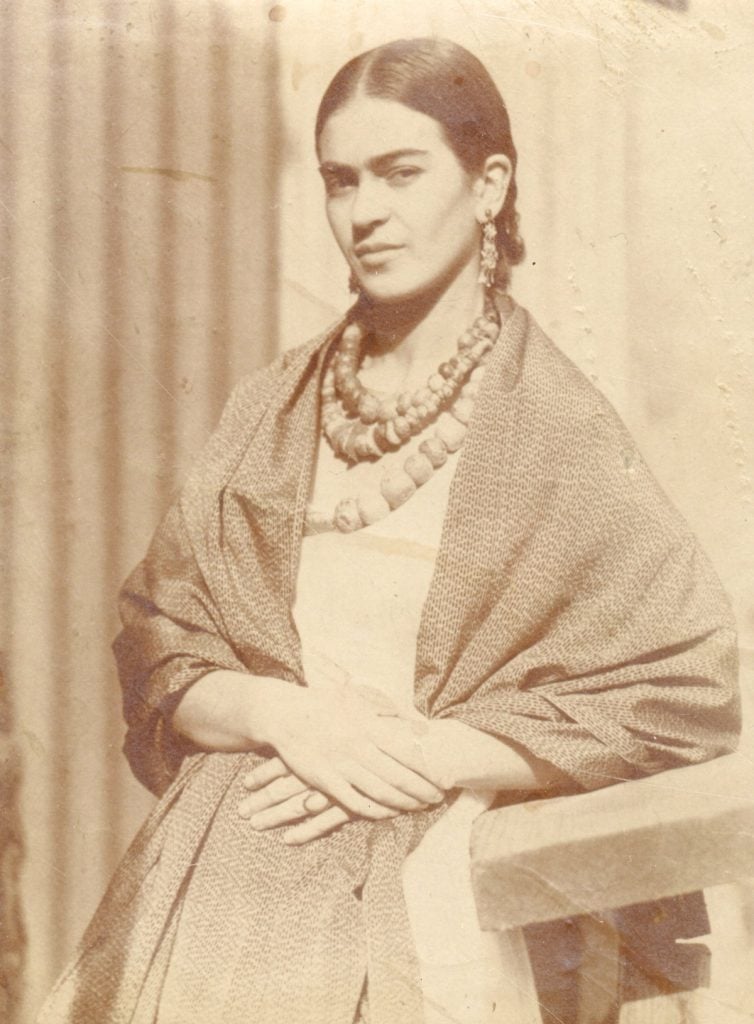
Edward Weston, Frida Kahlo Side Pose / Abstract drawing by Frida on verso (1931). Courtesy of Throckmorton Fine Art.
In other ways, the photographs influenced Kahlo’s painting practice directly. One portrait in the show by Leon DeVos shows Kahlo with a downward gaze—it is an image Kahlo would later base a self-portrait on. “She used the photograph as a model to paint her Self-Portrait with Jade Necklace, 1933. It’s almost identical to the pose of the photograph,” said Throckmorton, “I talked to Solomon Greenberg [the leading expert on Kahlo] and he says a lot of the photographs relate to her paintings.”
Other highlights in the show include three photographs from 1931 taken in San Francisco by Edward Weston, which Kahlo doodled on the back of. Another gem: a print of Kahlo and Rivera on the roof of the Detroit Institute of Art, watching the solar eclipse with a crowd—it’s the only vintage print of the moment known to exist.
For painting devotees, the exhibition also includes the Kahlo painting La Risa, which features a Mexican folk mask used in indigenous dances in festivals, as well as two drawings, which Frida made after she came back from Paris in 1939, made in purple crayon.
The exhibition, Throckmorton says, is a chance to glimpse, “just how fabulous and intelligent Frida really was.”
